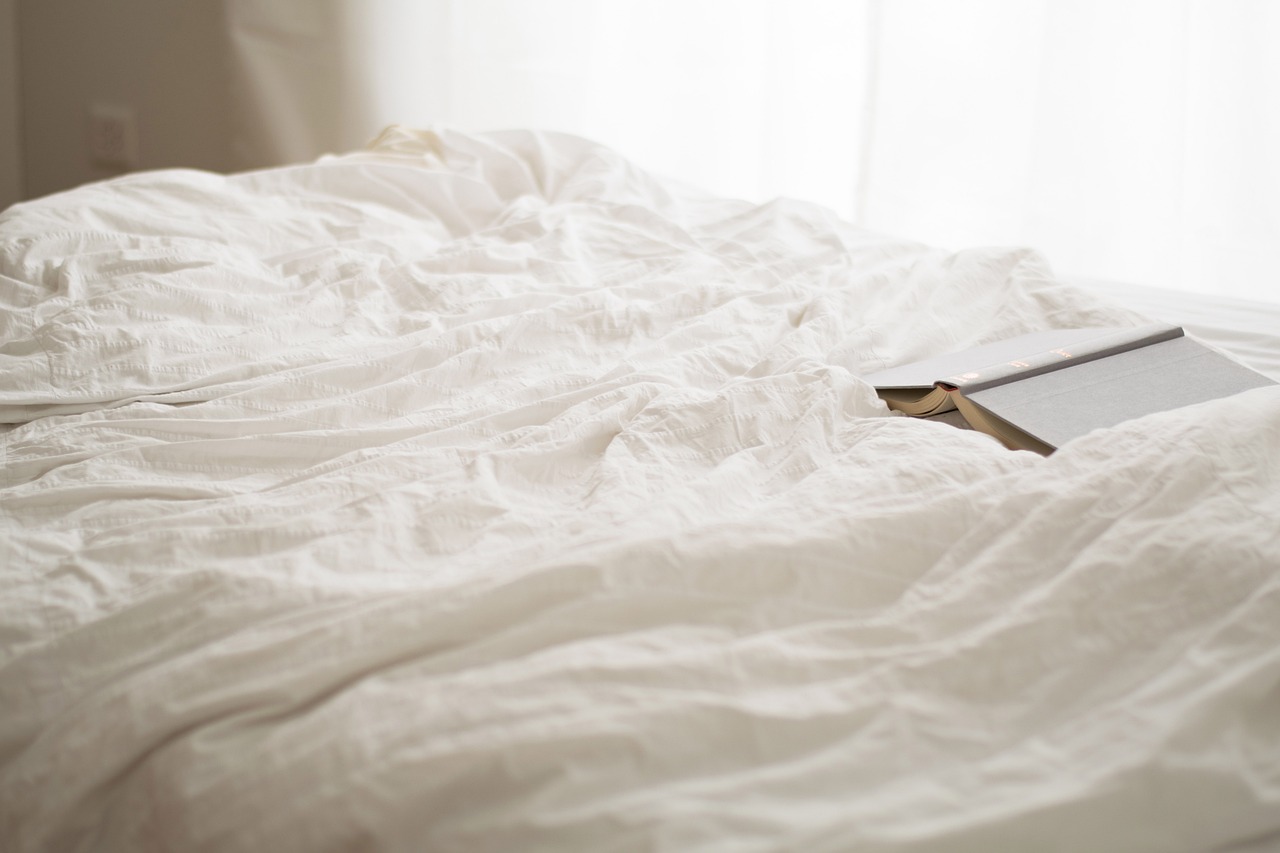Are you tired of dealing with bed bug infestations? Understanding the life cycle of bed bugs is crucial in effectively eradicating these blood-sucking pests from your home.
Bed bugs, scientifically known as Cimex lectularius, are small insects that feed on human blood, causing itchy bites and sleepless nights.
Knowing how to identify and characterize these sneaky creatures is the first step in combating them. Bed bugs go through a series of developmental stages, from eggs to nymphs to adults. Each stage has its own unique characteristics that can help you identify their presence in your home.
Understanding the habits and behaviors of bed bugs is also essential in controlling their population. These nocturnal pests hide in cracks, crevices, and furniture during the day and come out at night to feed on unsuspecting victims. By learning their hiding spots and feeding patterns, you can increase your chances of successfully eliminating them.
In this article, we will explore the complete life cycle of bed bugs, their habits, and behaviors, as well as prevention and control methods. Armed with this knowledge, you can develop an effective action plan to eradicate bed bugs and restore peace to your home.
Identification and Characteristics of Bed Bugs
Bed bugs, with their reddish-brown color and flat oval bodies, are the stealthy masters of disguise among household pests. These tiny insects measure about 5-7 millimeters in length, making them difficult to spot. They have six legs and two antennae, enabling them to navigate their environment with ease.
Bed bugs are known for their ability to hide in small crevices and cracks, such as mattress seams, headboards, and furniture. They are primarily active at night, feeding on their hosts’ blood while they sleep. Despite their small size, bed bugs can survive for several months without a blood meal. Their resilience and ability to reproduce quickly make them a formidable adversary for homeowners.
To effectively combat bed bugs, it’s crucial to understand their life cycle and habits.
The Bed Bug Life Cycle
Rest assured, you’ll be captivated by the fascinating journey these tiny creatures embark on from birth to adulthood. The bed bug life cycle consists of five stages: egg, nymph, instar, adult, and reproductive adult.
It all starts with a female bed bug, who can lay up to 500 eggs throughout her lifetime. These eggs are small, whitish, and about the size of a pinhead.
After around ten days, the eggs hatch into nymphs, which resemble smaller versions of adult bed bugs but are lighter in color. Nymphs go through five molts, or instar stages, where they shed their exoskeleton and grow larger. Each molt takes about a week, and after the fifth molt, the nymph becomes an adult.
The entire life cycle can take as little as four weeks or as long as four months, depending on environmental conditions and access to food.
Bed Bug Habits and Behaviors
Bed bugs have distinct habits and behaviors that make them difficult to detect and control.
First, they exhibit nocturnal feeding habits, preferring to feed on their human hosts while they sleep.
Secondly, these pests are skilled at finding hiding spots in cracks and crevices, as well as traveling along walls and electrical wires to reach their food source.
Finally, there are certain factors that attract bed bugs, such as the presence of carbon dioxide, warmth, and the scent of human sweat.
Nocturnal feeding habits
When you’re asleep, those pesky little critters come out to play, searching for a tasty midnight snack. Bed bugs are nocturnal creatures that feed exclusively on blood, and they prefer to do so under the cover of darkness.
Their feeding habits are well-adapted to their host’s sleeping patterns. Bed bugs are attracted to the warmth and carbon dioxide that humans emit during sleep, making your bed the perfect feeding ground. They are highly skilled at finding exposed skin, usually targeting areas such as the face, neck, arms, and legs.
Bed bugs use their specialized mouthparts to pierce the skin and extract blood. They inject a small amount of saliva that contains an anesthetic, ensuring that their feeding goes unnoticed. After they have had their fill, they retreat back to their hiding places, leaving behind itchy red welts as evidence of their nighttime feast.
Hiding spots and travel patterns
During the night, you may find it intriguing to discover the various hiding spots and intricate travel patterns of these elusive creatures.
Bed bugs are experts at finding hiding spots, often seeking refuge in cracks and crevices in mattresses, box springs, bed frames, and headboards. They can also hide in electrical outlets, behind wallpaper, and in furniture.
These pests are skilled travelers, hitching rides on luggage, clothing, and even people. They can easily move from room to room, infesting multiple areas in a short amount of time.
It’s important to note that bed bugs are not limited to beds; they can be found in other areas of the home as well, such as couches, chairs, and even in vehicles.
Understanding their hiding spots and travel patterns is crucial in effectively combating these pests.
Factors that attract bed bugs
To attract bed bugs, you may unknowingly create the perfect environment by leaving behind warm and cozy hiding spots in your home. Bed bugs are attracted to areas with plenty of cracks and crevices, such as in mattresses, furniture, and baseboards. They are also drawn to places that provide them with easy access to their hosts, such as beds and couches.
Bed bugs are attracted to human body heat, carbon dioxide, and the scent of human skin. They can sense these signals from several feet away, which allows them to locate their hosts and feed on their blood. Additionally, bed bugs are attracted to cluttered areas, as they provide more hiding places and make it easier for them to avoid detection.
To prevent bed bug infestations, it’s important to regularly clean and declutter your living spaces, seal any cracks and crevices, and regularly inspect and treat your bedding and furniture.
Prevention and Control Methods
One effective way to prevent and control bed bugs is by regularly inspecting and cleaning your living space. Start by inspecting your mattress, box spring, and bed frame for any signs of bed bugs, such as dark spots or shed skins. Use a flashlight to thoroughly examine the seams, crevices, and cracks.
If you spot any signs of infestation, immediately contact a professional pest control company. Additionally, vacuum your mattress, furniture, and floors regularly, paying close attention to the areas near the bed. After vacuuming, seal the vacuum bag in a plastic bag and dispose of it in an outdoor trash can.

Wash all bedding, linens, and clothing in hot water and dry them on high heat to kill any bed bugs or eggs. Consider using mattress encasements and bed bug interceptors to further protect your sleeping area.
Remember, early detection and regular cleaning are key to preventing and controlling bed bugs.
Action Plan for Eradicating Bed Bugs
Are you ready to take action and eliminate those pesky bed bugs from your home once and for all? Here’s an action plan to help you eradicate bed bugs effectively.
Firstly, start by thoroughly inspecting your home, paying close attention to areas where bed bugs are likely to hide, such as mattresses, furniture, and cracks in the walls.
Next, remove all clutter and vacuum your home meticulously, making sure to dispose of the vacuum bag immediately afterwards.
Wash all bedding, clothing, and fabrics in hot water and dry them on high heat.
Seal any cracks or crevices in your walls and furniture to prevent bed bugs from hiding there.
Consider using insecticides or hiring a professional pest control service to treat your home if the infestation is severe.
Finally, monitor your home regularly to ensure the bed bugs are completely eradicated. By following this action plan, you can effectively eliminate bed bugs from your home and prevent future infestations.
Frequently Asked Questions
Are bed bugs harmful to humans?
Bed bugs can be harmful to humans as they feed on blood, causing itchy bites and potential skin infections. They can also trigger allergies and asthma reactions in some individuals. Proper treatment is necessary to eliminate infestations.
How long can bed bugs survive without feeding?
Bed bugs can survive without feeding for several months, depending on temperature and humidity. They can withstand starvation by entering a dormant state called diapause, where their metabolism slows down.
Can bed bugs fly or jump?
No, bed bugs cannot fly or jump. They are wingless insects that rely on crawling to move from place to place. They can, however, move quickly across surfaces, including walls, floors, and furniture.
Do bed bugs only infest beds?
Bed bugs do not only infest beds. They can also be found in other furniture, cracks in walls, and even on clothing or luggage. It is important to thoroughly inspect and treat all potential infestation areas.
Are there any natural remedies to get rid of bed bugs?
Yes, there are natural remedies to get rid of bed bugs. Options include using diatomaceous earth, tea tree oil, lavender oil, and steam treatment. These methods can help eliminate bed bugs without the use of chemicals.
Conclusion
So now you understand the life cycle of bed bugs and the various stages they go through. From eggs to nymphs to adults, these pests can be a real nuisance in your home.
It’s crucial to identify and understand their habits and behaviors, as well as implement prevention and control methods to eradicate them effectively. By following an action plan that includes thorough cleaning, vacuuming, and targeted pesticide treatment, you can eliminate these pesky bugs and ensure a bed bug-free environment in your home.
Stay vigilant and take action to keep these unwelcome guests at bay.










